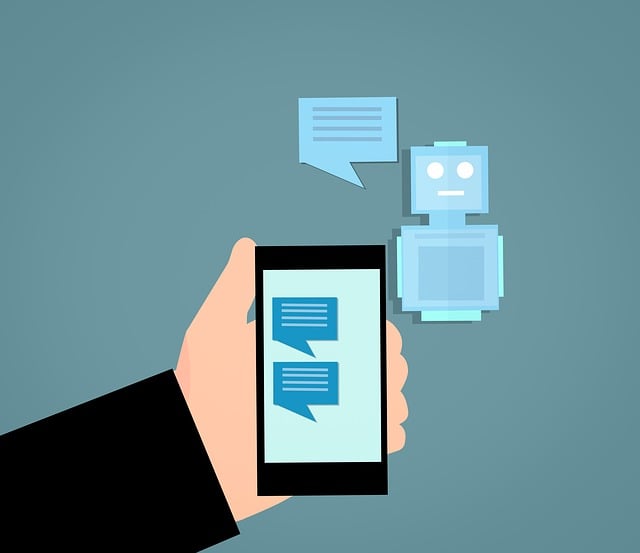AI customer service chatbots are transforming business interactions by leveraging advanced NLP and ML to provide personalized, contextually aware support. They adapt to diverse user needs, learn from conversations, and predict future requirements, enhancing satisfaction and brand loyalty. Success is measured through a multi-faceted approach focusing on accuracy, user satisfaction, adaptability, and continuous improvement, with sentiment analysis and NLP key to achieving human-like interactions. As technology advances, AI chatbots promise increasingly sophisticated service experiences.
In today’s dynamic market, AI chatbots are transforming customer service by adapting to diverse needs. As businesses strive to offer personalized experiences, understanding the spectrum of user expectations becomes paramount. This article explores how AI chatbots cater to individual preferences, utilizing advanced techniques and technologies. We delve into measuring success in dynamic environments, providing insights on evaluating AI chatbot performance. By integrating these strategies, companies can enhance customer satisfaction and stay ahead in the competitive landscape of ai customer service.
- Understanding Diverse Customer Needs: Unraveling the Spectrum of User Expectations
- The Role of AI Chatbots in Personalizing Customer Experiences
- Adapting to Individual Preferences: Techniques and Technologies
- Measuring Success: Evaluating AI Chatbot Performance in Dynamic Environments
Understanding Diverse Customer Needs: Unraveling the Spectrum of User Expectations

In the dynamic landscape of AI customer service, understanding diverse customer needs is paramount. Every interaction with a chatbot represents an opportunity to cater to unique user expectations—a spectrum that extends from straightforward queries about product information to complex issue resolution and personalized recommendations. To effectively adapt, AI chatbots must be designed to interpret nuanced language, recognize emotional cues, and accommodate varying communication styles.
This adaptability necessitates sophisticated natural language processing (NLP) algorithms capable of contextual understanding. By delving into the subtleties of user inputs, these chatbots can provide tailored responses that resonate with customers across various demographics and preferences. In today’s digital era, where customer service expectations are ever-evolving, AI-driven solutions that embrace diversity stand as game changers, ensuring every interaction leaves users satisfied and engaged.
The Role of AI Chatbots in Personalizing Customer Experiences

AI chatbots are transforming the way businesses interact with their customers, offering a personalized and efficient AI customer service experience. By leveraging advanced natural language processing (NLP) and machine learning algorithms, these virtual assistants can understand and anticipate individual user needs. This enables them to provide tailored responses, recommendations, and solutions, creating a unique and engaging interaction for each client.
Personalization goes beyond simple greeting messages; it involves the chatbot’s ability to remember customer preferences, purchase history, and even contextual cues from previous conversations. Such insights enable AI chatbots to offer relevant product suggestions, proactive support, and customized guidance, enhancing customer satisfaction and fostering stronger brand loyalty. This level of personalization was once unimaginable in automated customer service but is now a reality thanks to the evolution of AI technology.
Adapting to Individual Preferences: Techniques and Technologies

AI chatbots are revolutionizing customer service by adapting to individual preferences, offering a personalized experience that was once unimaginable. They achieve this through sophisticated techniques and technologies like natural language processing (NLP) and machine learning (ML). NLP enables chatbots to understand context, sentiment, and intent behind user queries, allowing them to respond accurately and relevantly. ML algorithms power these systems by continuously learning from interactions, improving their ability to anticipate and cater to unique customer needs over time.
By leveraging user data ethically while maintaining privacy, AI chatbots can personalize conversations, recommend products or services, and even predict future needs based on past interactions. This level of adaptability not only enhances customer satisfaction but also fosters stronger relationships between customers and brands. As these technologies advance, expect to see even more sophisticated AI chatbots transforming the landscape of customer service.
Measuring Success: Evaluating AI Chatbot Performance in Dynamic Environments

Measuring success in AI customer service chatbots involves a nuanced approach tailored to dynamic environments. Traditional metrics like response accuracy, though crucial, only scratch the surface. In diverse, ever-changing conversational landscapes, evaluating chatbot performance requires a holistic perspective. This includes gauging user satisfaction levels, understanding context-specific adaptability, and tracking improvements over time. Advanced techniques such as sentiment analysis and natural language processing play a pivotal role in these assessments, enabling chatbots to learn from interactions and adjust their responses accordingly.
The ultimate goal is to foster seamless, human-like conversations that cater to individual customer needs. By continuously refining evaluation methods, AI chatbots can adapt to evolving preferences, incorporate new knowledge, and provide consistent, high-quality service. This iterative process ensures that customer expectations are met, fostering trust and enhancing the overall user experience in a competitive market.






